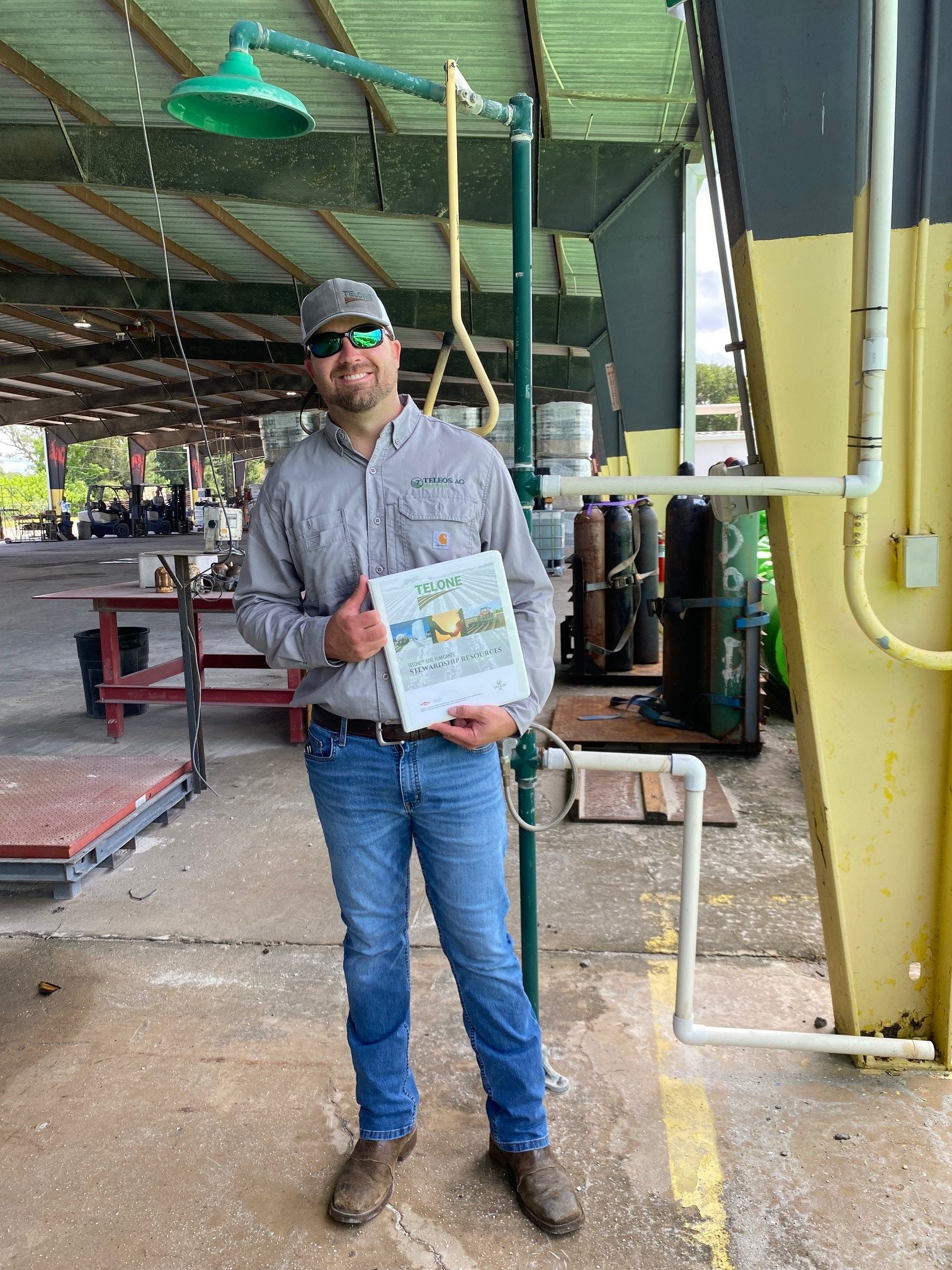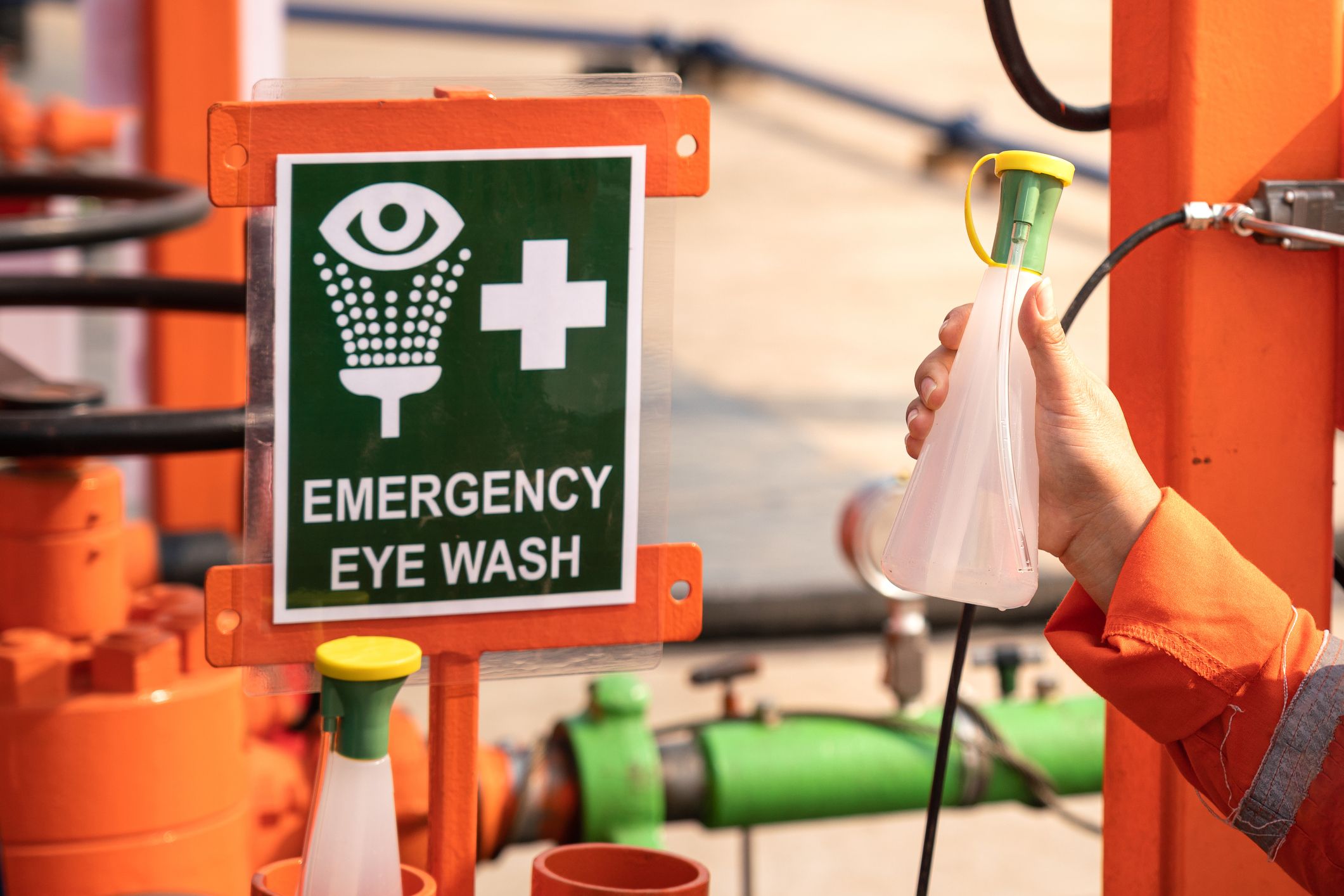Preparation
Ralph Marston’s quote, “What you do today can improve all your tomorrows,” perfectly reflects Teleos Ag Solutions’ commitment to stewardship. Being prepared for emergencies not only safeguards the health and safety of workers but also ensures that incidents are managed swiftly and effectively, minimizing potential harm.
It’s not enough to have safety equipment on hand; every worker must know where it is and how to use it effectively. Reviewing product labels and Safety Data Sheets (SDS) before handling chemicals ensures everyone understands the risks and knows the proper first aid steps to take. By fostering a culture of preparedness, you not only protect the well-being of your team but also reinforce the responsible stewardship that is key to successful and sustainable agricultural practices.
This blog post and downloadable tip sheet provide essential first-aid information to help you and your team respond quickly and effectively in the event of accidental exposure. Remember, there’s no coming back from a poor start!
General Considerations
- This sheet is for informational purposes only and does not replace professional medical advice. Always refer to the TELONE™ label and Safety Data Sheet (SDS) for comprehensive safety guidelines. Follow your company’s first-aid policy.
- Be prepared! Locate safety equipment (eye wash, safety shower, first-aid kit, etc.) and review the product label and SDS before handling TELONE™.
- TELONE™ Safety Data Sheets and labels available at https://teleosag.com/labels-sds/
- Personal protective equipment is your last line of defense against exposure to TELONE™. Always wear appropriate PPE, when handling TELONE™. Here is a link to approved TELONE™ PPE and a 10% discount code.
- Though not required, having 2 qualified handlers is a best practice in case of an emergency.
- First Aid responders should pay attention to self-protection and use the recommended protective clothing (chemical resistant gloves, splash protection, etc.).
- Have emergency numbers nearby:
- Local Emergency Services: 911
- Poison Control:1-800-222-1222
- Chemtrec: 1-800-424-9300

Emergency First Aid Measures
- Inhalation: Dizziness, headache, nausea, coughing, difficulty breathing, respiratory irritation.
- First Aid:
- Immediately move the person to fresh air. Ensure they are in a position to breathe comfortably. Remove tight-fitting clothing.
- If breathing is difficult, administer oxygen if available and you are trained.
- If the person is not breathing, call 911 and begin CPR and continue until medical professionals arrive.
- Seek immediate medical attention if large concentrations have been inhaled.
- First Aid:
- Skin Contact: Redness, irritation, burning sensation, chemical burns.
- First Aid:
- If clothing was contaminated, remove articles immediately
- Immediately flush skin with plenty of water for at least 15-20 minutes
- Do not apply creams or ointments unless instructed by medical personnel.
- If irritation persists or a large skin area is affected, seek immediate medical attention.
- First Aid:
- Eye Contact: Eye irritation, burning, redness, tearing, blurred vision.
- First Aid:
- Immediately rinse the eyes with water for at least 15 minutes, holding the eyelids open and rotating the eyes to ensure thorough flushing.
- Remove contact lenses if present after 5 minutes of flushing, then continue flushing
- After rinsing, get medical attention immediately, even if symptoms seem to improve.
- First Aid:
- Ingestion: Nausea, vomiting, abdominal pain, diarrhea.
- First Aid:
- Contact Poison Control or Physician immediately for treatment
- Do NOT induce vomiting unless told to do so by Poison Control or Physician
- Slowly sip water, if possible.
- First Aid:
In conclusion, when handling TELONE™, it is important to be prepared by fully understanding proper first aid protocols. Familiarize yourself with the product label and SDS, and be aware of your onsite safety protocols before you start handling the product. First aid is a critical component of onsite product stewardship, so be prepared. Remember, there’s no coming back from a poor start!
Disclaimer:
The resources and information provided are meant purely for educational discussion, contains only general information about legal matters, and is not to be construed as advice. Please note that any information or resources provided are not legal or regulatory advice, and should not be treated as such. You must not rely on the information provided as an alternative to legal advice from your attorney or other professional services. Teleos Ag encourages readers to consult with counsel, and their local, county, and state regulators. We make no representations or warranties, express or implied, in relation to the information provided through our resources and blog posts. It is the readers responsibility to know the laws related to 1,3- D, appropriate PPE, Licensing, etc., in his or her City, County, State, and Country.
- EQUIPMENT COMPATIBILITY: METAL SELECTION FOR TELONE™ by TELEOS SOIL FUMIGANT - December 16, 2025
- STORAGE SECURITY FOR TELONE™ by TELEOS - October 16, 2025
- TIP SHEET: PLACARDING FOR BULK SHIPMENT RETURNS - August 15, 2025


